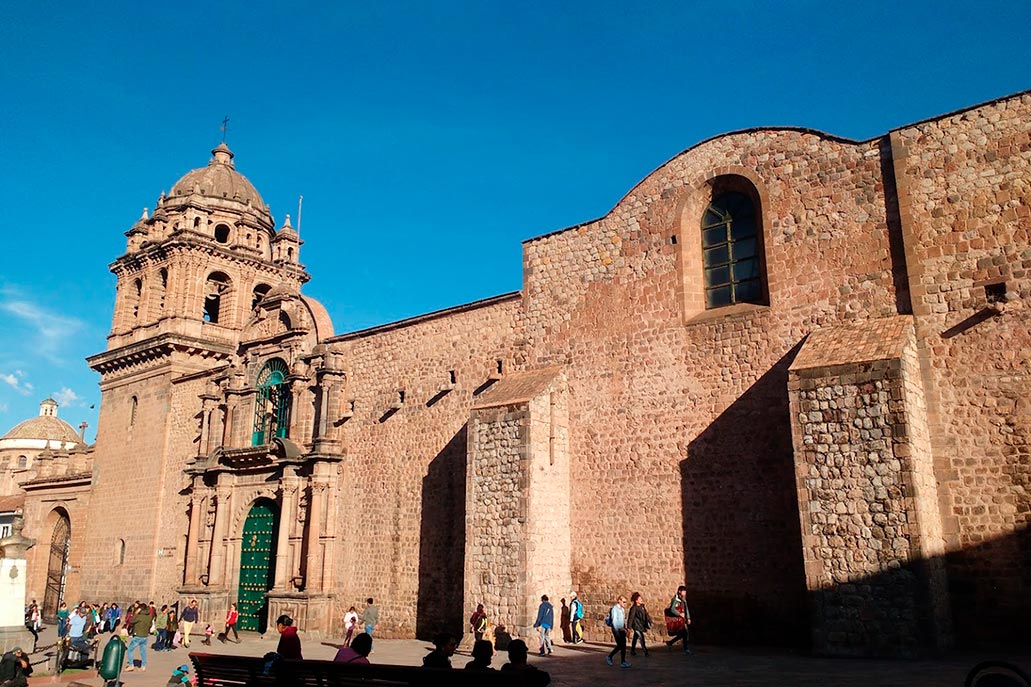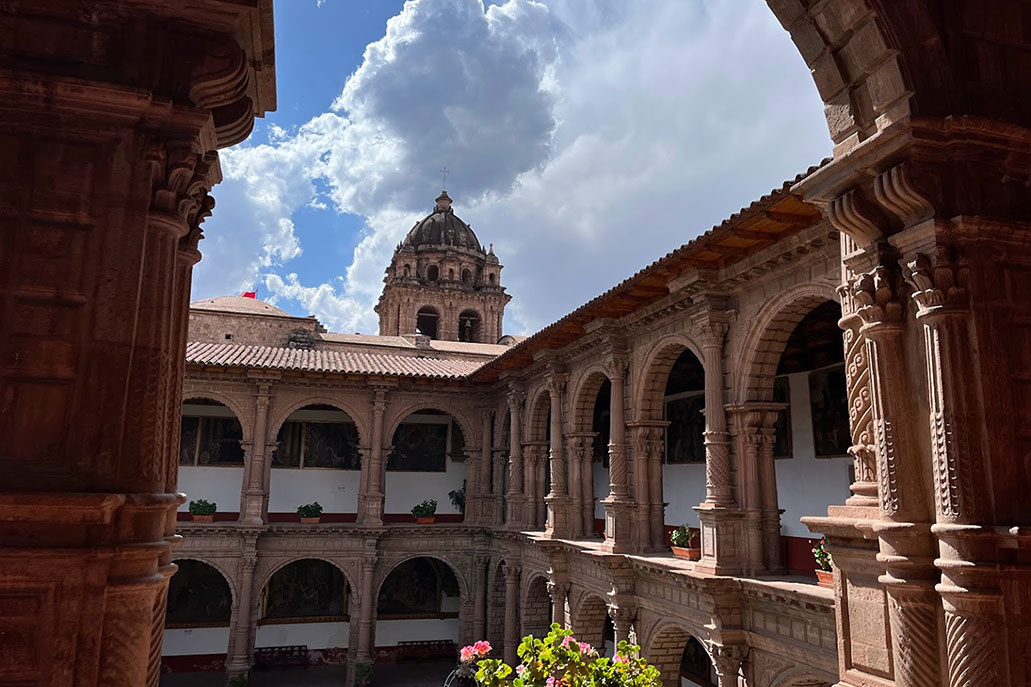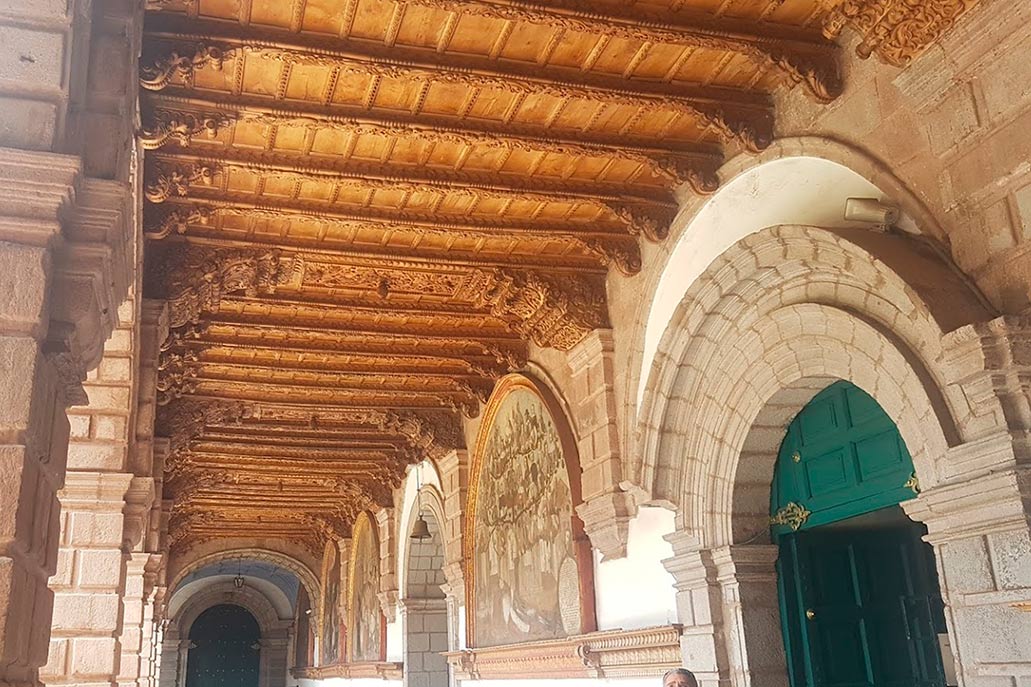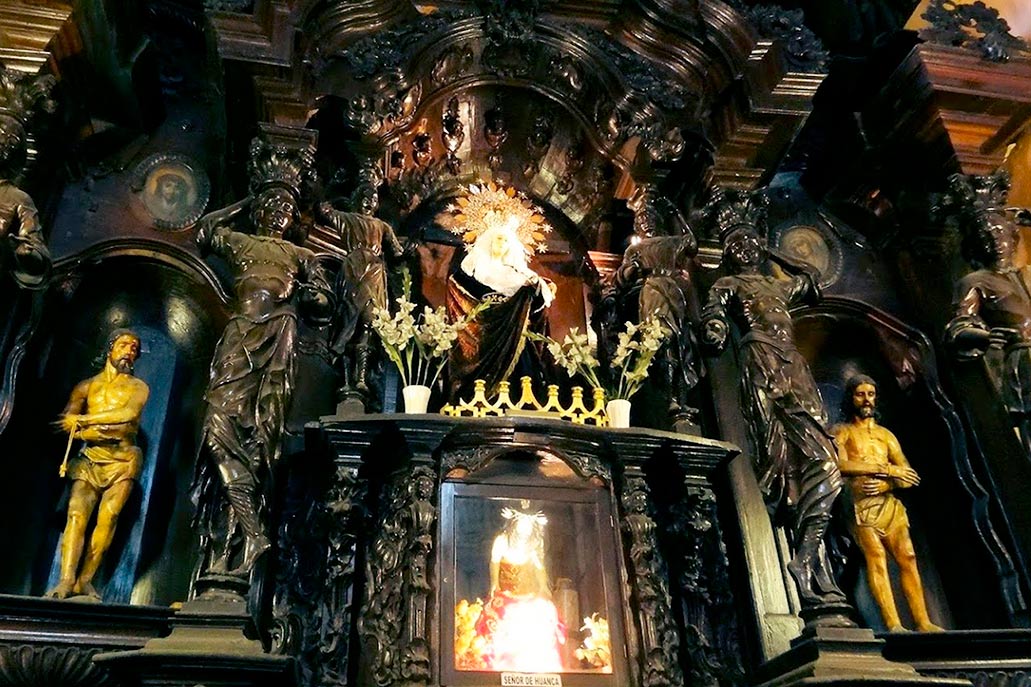The Merced Church and Convent: one of the most beautiful in Cusco
One of the most imposing and best-achieved churches and convents is that of La Merced. Since the conquest, different religious orders began to arrive to evangelize Peru. Although the number of the first Mercedarians was tiny compared to the others. This order managed to settle in the city of Cusco. Obtaining the recognition of Francisco Pizarro and later for his missionary campaigns in little-explored towns, he managed to position himself as a religious reference and, above all, an evangelizer in the lands of Cusco.
Content
1. History of the Merced Church and Convent
According to some chronicles, it was during the year 1535 that the first Mercedarians arrived in the city of Cusco. Where they founded their first ranch thanks to the initiative of Fray Sebastián de Castañeda y Trujillo. After conquering and distributing land, Francisco Pizarro gave part of his possessions so that this religious Order could build its first temple. While they were building their first temple, they set up a space for them to begin practicing religious education in the first volunteers.
Over the years, it was considered the Main Temple of Cusco, because it was one of the first constructions. The other constructions already occurred at the end of the 16th century. Although the first Mercedarian constructions were very modest, they were used to house the deceased bodies of Diego Almagro and Gonzalo Pizarro.
The Order of Merced, in its beginnings, had two missionaries who fulfilled evangelizing functions, they were Fray Martín de Murúa, he was a chronicler who dedicated his stay in Peru to collecting information and publishing a chronicle giving part of the history of Tawantinsuyo. The second was Fray Diego de Porres, a missionary dedicated to evangelization through local instruments, it is said that in some cases he used quipus. We will talk about them later.
Like most temples in the city of Cusco, it suffered a lot of damage from the telluric movements of 1650 and 1950. In both situations, remodeling and some corrections were made to the columns. After 1950 it kept that form until today. Due to its great decorations and the history it houses, it is one of the most visited churches in Cusco.
2. Story of the 3 beheaded
The story of the 3 beheaded narrates the death and burial of three important Spanish conquer figures. Diego de Almagro died after the betrayal of the pizarristas that ended in the Battle of Las Salinas (1538). Before being beheaded and begging for his life, he was humiliated by Hernando Pizarro. Malgarida, his servant, collected his remains and took them to the Mercedarian order of whom he was the main benefactor.
Four years after the death of Diego de Almagro, Almagro El Mozo, his son, barely 20 years old, would die in the same place as his father and in the same way. He was buried next to his father.
Years later, the remains of Gonzalo Pizarro were moved. He died beheaded for rising against the Spanish crown in 1548. After a few years, his remains were taken to the La Merced church. According to some accounts, it is believed that his head was stolen when it was left in iron cages in the Plaza Mayor in Lima. The remains of these three people can be found in the La Merced Church and Convent.
3. Decorations inside the Merced Church and Convent
Inside the temple and of the Merced convent you can find different murals, paintings, carvings, and the Custody of La Merced, among others, let’s see:
- It has different canvases, uone of the most representative of this order, it is dedicated in the form of a mural, where you can appreciate the different ramifications and believers that the Order of Mercy had. Likewise, you can see the set of canvases representing the founder of the order of Mercedarians: San Pedro Nolasco. Other important canvases are The Coronation of Our Mother and The Representation of Our Mother of Mercy.
- The cloisters of the convent have fine finishes and are surrounded by carved stone arches with Andean Baroque representations. The floors were repaired after the 1950 earthquake, have top-quality decorations and carved wooden ornaments, and are in perfect condition. Also inside the church, you can see the Dome in the central nave of the church. This ceiling has majestic paintings and decorations, they also have lamps made up of multiple pieces.
- Inside the museum you can find: Menora or Jewish Candelabrum, it consists of seven arms, which is why it is called Menora. It is made entirely of silver. It was a donation from the Jewish colony to the convent of La Merced in the 18th century. These artifacts were used to place candles, which were lit during liturgical ceremonies.
- Another important piece that can be found in the Tabernacle. This piece is embossed in silver with decorations of helical Solomonic columns. These stick out on both sides of the door. It has a baroque style that was made in the eighteenth century. It served as a reserve for the Holy Body of Christ.
- The custody of La Merced, is a piece of incalculable value. It is a jewel composed of multiple precious stones and gold. He is 1.25 meters tall and weighs 22 kilograms. Its structure has 250 grams of solid gold, 1518 diamonds, and 615 precious stones. The most striking thing is that it has a pearl, the second largest in the world. This pearl is in the shape of a mermaid. The monstrance is made of gold, in the Baroque style, and it was created by Luis Ayala Olmos in the 17th century. It is one of the works in gold and other beautiful metals that give it incalculable value. Its large size is also important for its appreciation because it reveals every detail of the precious stone inlays it has. Likewise, the carvings that were made throughout the piece.
- Among the canvases distributed inside the convent, works of great artistic quality stand out. The most recognized names that we can mention are: Jesuit Brother Bernardo Bitti, Martín de Loayza, Francisco de Padilla, Zurbaran, Diego Quispe Tito, and Marcos Rivera, among others.
- You can find other simpler items, without ceasing to be beautiful. One of them is a Christ carved in ivory. Likewise some belongings of Fray Vicente Valverde.
4. First important representatives of the Order of Merced in Peru
Some representatives of the Order of Mercy who performed functions in ancient Peru are the following:
- Life of Fray Martín de Murúa, there is no clear date of his birth. Two years 1525 or 1540 are handled. He was a friar of Spanish origin, he came to the Viceroyalty of Peru as a doctrine or evangelizer. From a very young age, he dressed as a monk enrolled in the Mercedarian Order. The year of his arrival in Peru is estimated to be in the year 1560.
He learned Quechua and Aymara, languages are spoken by a large number of the natives of Peru. He held different jobs in different places. He going through Peru and Argentina. In 1615, he returned to Spain.
TAfter returning to the old world, he tried to publish his chronicle titled General History of Peru. Origin and descent of the Incas, where he narrates the beginning, the customs, as well as the Inca civil wars, until the arrival of the Spanish. His work remained unpublished until the 20th century and is known today as the Loyola Manuscript. - As for Fray Diego de Porres, there are not many records. It is believed that he came from Spain to be educated in the Mercedarian order of Lima. After that, he went through different places teaching evangelization. There is some data that he passed through Cusco, Argentina, and part of Paraguay. Fray Diego de Porres is currently considered an example of evangelization and a source of pride for the Order of La Merced.
5. Important information
Hours of operation of the La Merced temple and convent in Cusco: it is possible to enter the church during masses. In case you want to know the museum where the main figures made of precious metal are exhibited, the hours are from Monday to Saturday from 8:00 a.m. to 5:30 p.m. It is located very close to the Plaza de Armas, it is possible to walk from there. The exact address of the La Merced temple and convent in Cusco is in Plazoleta Espinar, Calle Mantas 121 Cusco – Perú. The approximate price to visit this convent is 15 soles o 5 dólares americans.



